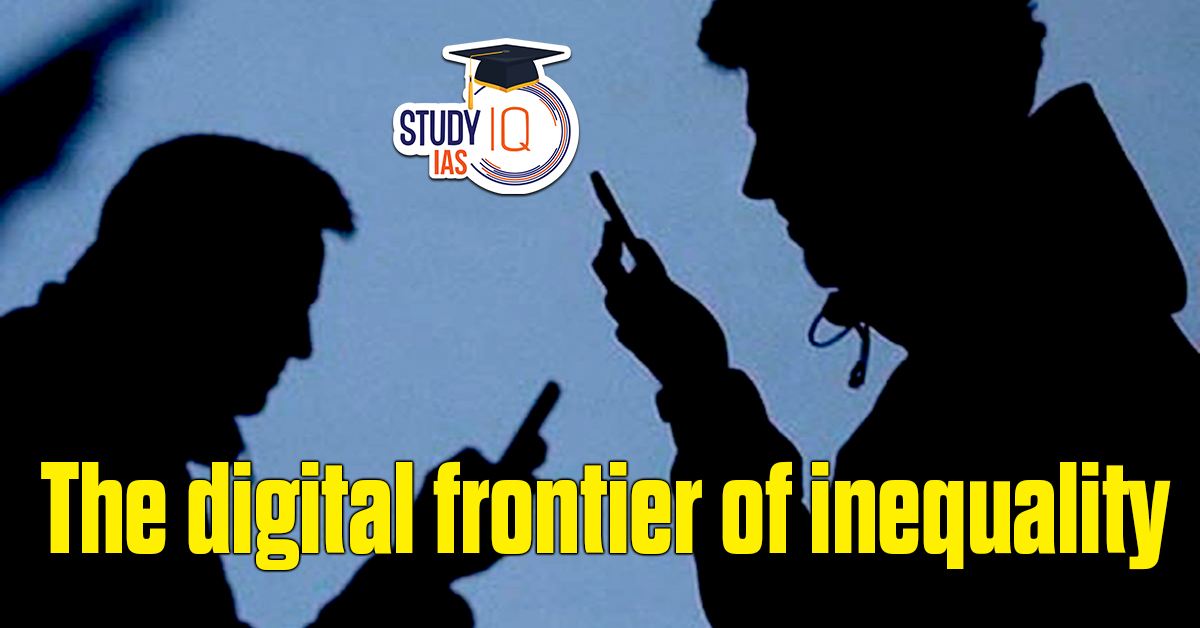Table of Contents
India’s Digital Landscape
- Mobile Connections: 1.18 billion
- Internet Users: 700 million
- Smartphones: 600 million
- Gender Inclusion: Women hold 55.6% of the accounts under the Pradhan Mantri Jan Dhan Yojana (PMJDY).
- Rural Internet Penetration: 20% higher than urban areas (2021 Nielsen report).
- India’s digital infrastructure has unlocked new opportunities, especially for women in rural areas, by enabling direct benefits and cashless transactions via Jan Dhan-Aadhaar-Mobile (JAM)
Risks of Digital Transformation for Women
Despite progress, increased digital connectivity has exposed women to various risks:
- Forms of TFGBV:
- Cyberstalking
- Online Trolling
- Non-Consensual Sharing of Intimate Images
- Impersonation and Fraud (fake profiles)
- Voyeurism
- Grooming (exploitation of vulnerable individuals)
- Impact on Women:
- Women in public-facing roles, such as journalists and politicians, face rampant harassment.
- Societal norms constrain women’s digital literacy and confidence in navigating online spaces.
- Many women are unaware of their rights and reporting mechanisms, leading to retreat from digital spaces.
Government Initiatives and Legal Framework
India has implemented various measures to combat TFGBV:
- Legal Protections:
- Information Technology Act, 2000
- Bharatiya Nyaya Sanhita, 2024
- Reporting Mechanisms:
- National Cyber Crime Reporting Portal allows anonymous reporting.
- Awareness and Education:
- Information Security Education and Awareness Programme: Promotes digital safety awareness.
- Digital Shakti: Launched by the National Commission for Women to help women navigate online spaces securely.
- International Engagement:
- Participation in the 67th Session of the Commission on the Status of Women: India supported safeguards to promote a secure digital environment for women and girls.
The Way Forward
To create truly safe digital spaces for women, India needs strategic and focused efforts:
- Legal and Policy Frameworks: Align efforts with the Global Digital Compact adopted at the UN Summit of the Future (2024).
- Prioritize combating TFGBV with stricter laws, swift justice, and holding social media platforms accountable.
- Expanding Digital Literacy: Target rural areas and integrate safe online practices into school curriculums.
- Conduct community workshops for all demographics to build digital awareness.
- Changing Societal Norms: Launch nationwide campaigns to challenge societal norms.
- Actively engage men and boys as allies in fostering inclusive digital spaces.
- Collaboration with the Tech Industry:
- Enhance safety features on platforms.
- Use artificial intelligence to detect and remove abusive content while ensuring human oversight.
- Improve user-friendly reporting mechanisms.
- Survivor Support Systems: Strengthen counselling services, legal aid, and rehabilitation support.
- Expand initiatives like TechSakhi, a helpline offering:
- Accurate information
- Empathetic support
- Assistance for survivors
- Expand initiatives like TechSakhi, a helpline offering:


 Countercyclical Capital Buffer (CCyB): P...
Countercyclical Capital Buffer (CCyB): P...
 STELLAR Model: A Game-Changer in Power S...
STELLAR Model: A Game-Changer in Power S...
 Indus Water Treaty 1960 Suspension Hurts...
Indus Water Treaty 1960 Suspension Hurts...





















